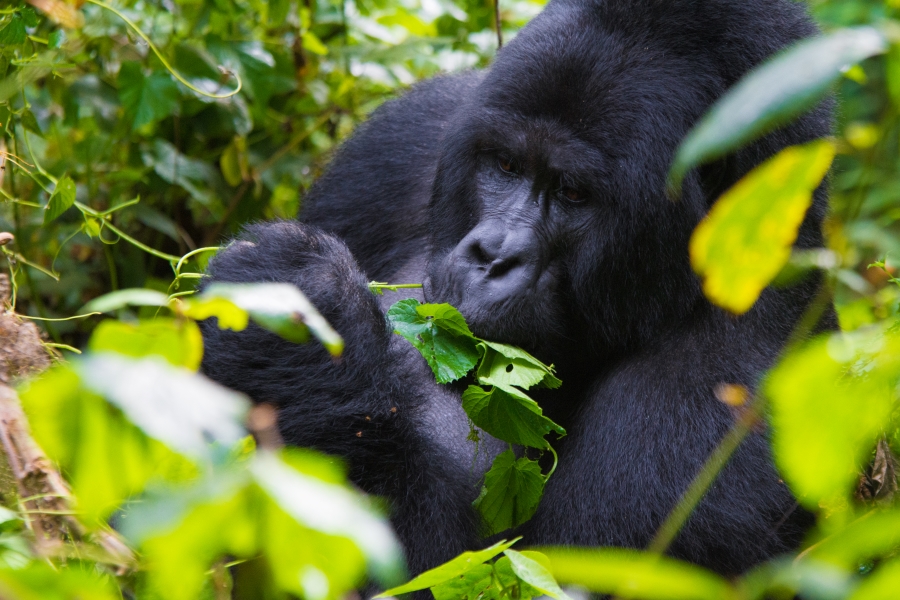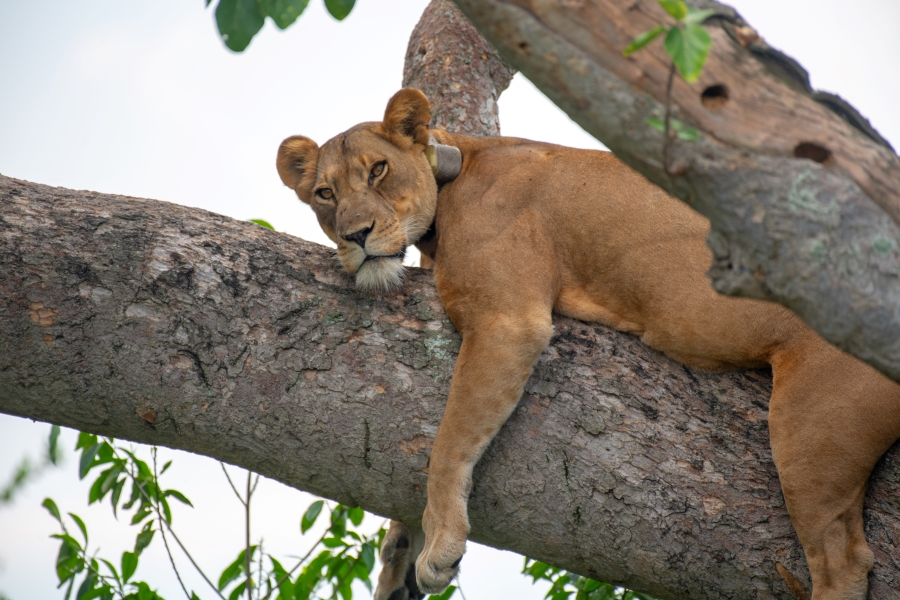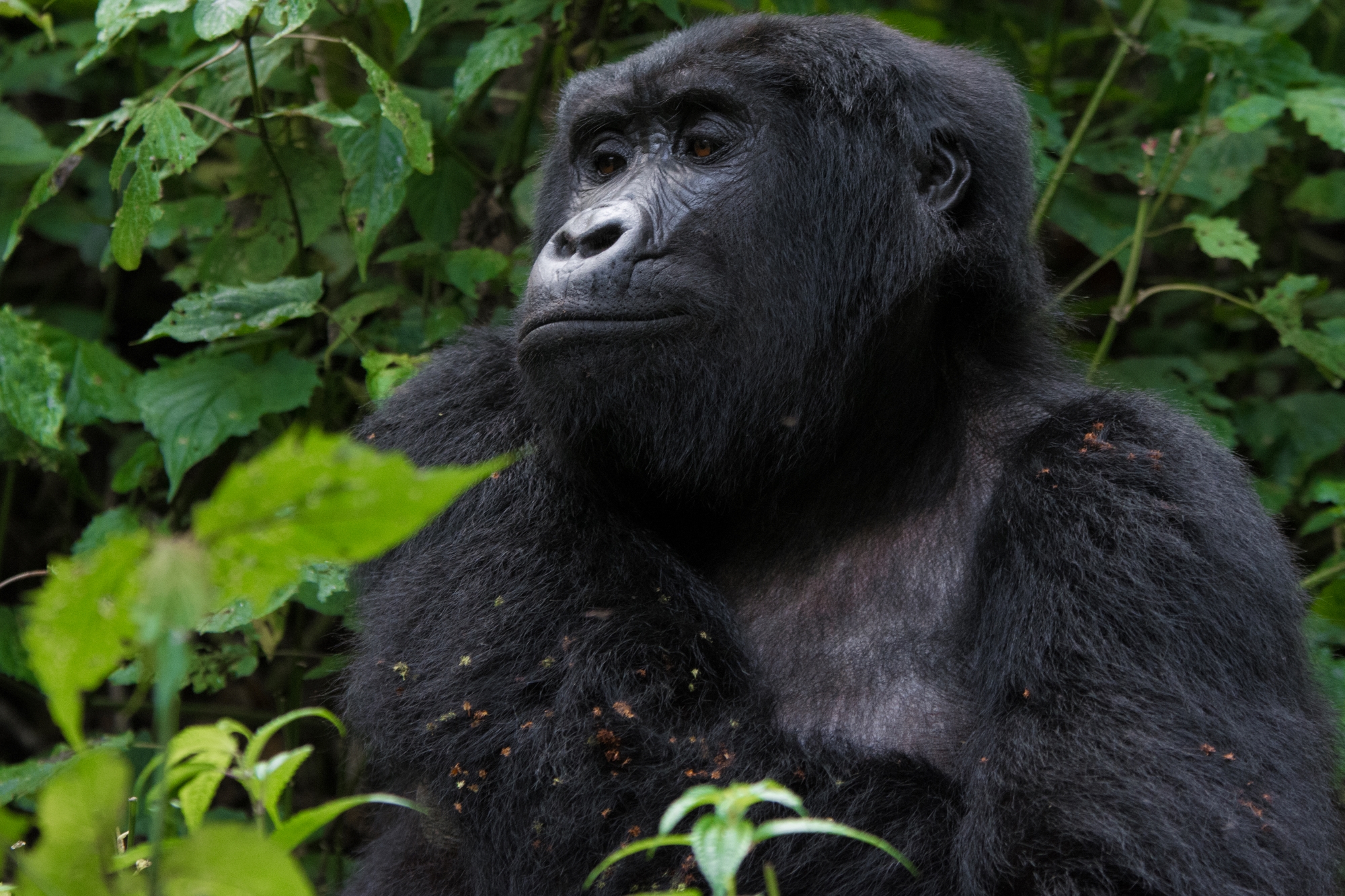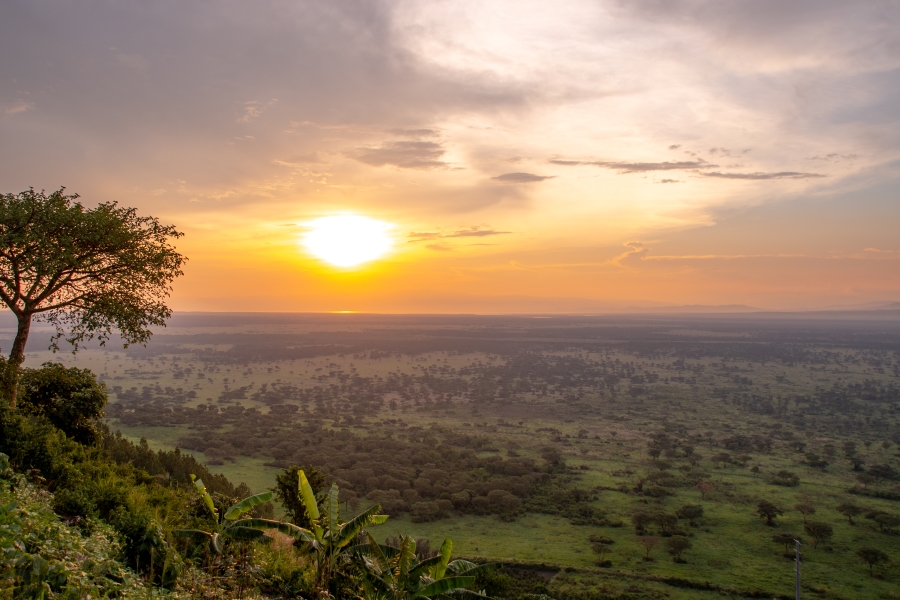Silverback Mountain Gorillas
Silverback mountain gorillas are mature male mountain gorillas characterized by a distinctive silver or gray saddle-shaped patch of hair on their backs. These majestic creatures play a crucial role in their social groups. Typically leading and protecting their families. As dominant males, silverbacks are responsible for maintaining order and resolving conflicts. They also defend their group against external threats.
Leadership and Protection
Silverbacks are known for their gentle yet authoritative behavior. They often display dominant behaviors such as beating their chest and vocalizing to assert their dominance. They are also fiercely protective of their group members, particularly the females and infants. With their impressive size, strength, and intelligence, silverbacks are well-equipped to defend their group and ensure their safety. As leaders, they also play a key role in guiding their group to the best food sources and habitats, ensuring their survival in the challenging mountainous terrain.
Deep within the mist-shrouded volcanoes and impenetrable forests of Central Africa lives a creature of immense power and surprising gentleness: the mountain gorilla silverback. He is the patriarch, the protector, and the heart of his family group. More than just the largest and strongest member, the silverback is the central figure around which all gorilla social life revolves. His leadership is not won through mindless aggression, but through a complex blend of strength, wisdom, and care.
The most obvious sign of a silverback is the striking patch of silver-grey hair that adorns his back and hips, a sign of maturity that typically develops around 12 to 15 years of age. Beneath this silver saddle is a powerhouse of muscle. A fully grown silverback can weigh over 400 pounds and possess strength estimated to be many times that of a grown man. His physical presence is commanding, with a large, conical skull topped by a prominent sagittal crest that anchors powerful jaw muscles. Yet, his most expressive features are his thoughtful, deep-set brown eyes, which seem to hold a profound understanding of his world.
Why a Silverback?
The role of the silverback is all-encompassing. He is the group’s primary decision-maker, leading his family to feeding grounds each day and selecting nesting sites each night. His most critical duty is that of protector. He will fearlessly defend his family from any perceived threat, whether it be a lone leopard, a rival silverback, or even humans. This defense often begins with a spectacular display of intimidation: he will stand upright, beat his chest with cupped hands to create a resonant drumming sound, tear at vegetation, and charge while emitting terrifying roars. These displays are almost always bluff charges, a final warning before actual conflict.
However, to define a silverback by his strength alone is to miss his true nature. He is also a surprisingly gentle and playful leader. He mediates conflicts between group members, often with a mere look or a soft grunt. He will patiently tolerate the antics of playful juveniles who may climb and tumble over him. Visitors on gorilla treks are often most captivated by these moments of tenderness, watching the mighty silverback gently groom his females or cradle an infant in his massive, careful hands. This balance of fierce protection and deep familial commitment is what truly defines his character.
The Bloodline
The survival of the entire mountain gorilla species is intrinsically linked to the well-being of these silverbacks. Each family group is built around him, and his death can have catastrophic consequences. If no young silverback is ready to take over, the family may splinter, leaving the vulnerable females and offspring exposed to infanticide by rival males. Conservation efforts that protect these majestic leaders through anti-poaching patrols, habitat preservation, and responsible tourism are therefore not just about saving individual animals, but about safeguarding the entire social structure of this endangered species. To observe a silverback in his domain is to witness one of nature’s most complete leaders: a being of immense power guided by a deep sense of responsibility for his family.









